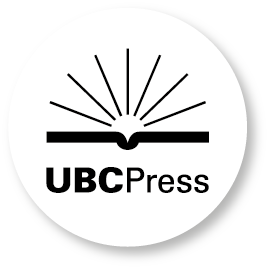Building for People
Designing Livable, Affordable, Low-Carbon Communities
Island Press
Picture a beautiful, green neighborhood where most of your needs could be met by walking, rolling, or accessing transit. There is a diversity of housing types with abundant affordable and middle-income options. Schools, services, and pedestrianized streets make the neighborhood family friendly. As cities turn brownfields into green fields and look to maximize public investment in transit and infrastructure, ecodistricts are the answer. Eliason shows that this type of affordable, climate-adaptive living option is possible anywhere.
In Building for People, architect and ecodistrict planner Michael Eliason makes the case for low-carbon ecodistricts and presents tools for developing these residential and mixed-use quarters or neighborhoods. Drawing from his experience working in Europe and North America, he shows the potential for new climate-adaptive ecodistricts that directly and equitably address our housing shortages while simultaneously planning for climate change. Eliason explains that to create highly livable places with a low carbon impact, ecodistricts must incorporate ample social housing for a good economic and social mix of residents, invest in open space, create infrastructure that can adapt to a changing climate, and offer car-free or car-light realms. He also looks at how public health, livability, climate adaptation, and quality of life are interconnected.
Full-color photos and illustrations show what is possible in ecodistricts around the world, drawing heavily from examples in German cities.
Building for People shows professionals involved in regulating, planning, or designing our communities that high-quality, low-carbon living is within reach.
In Building for People, architect and ecodistrict planner Michael Eliason makes the case for low-carbon ecodistricts and presents tools for developing these residential and mixed-use quarters or neighborhoods. Drawing from his experience working in Europe and North America, he shows the potential for new climate-adaptive ecodistricts that directly and equitably address our housing shortages while simultaneously planning for climate change. Eliason explains that to create highly livable places with a low carbon impact, ecodistricts must incorporate ample social housing for a good economic and social mix of residents, invest in open space, create infrastructure that can adapt to a changing climate, and offer car-free or car-light realms. He also looks at how public health, livability, climate adaptation, and quality of life are interconnected.
Full-color photos and illustrations show what is possible in ecodistricts around the world, drawing heavily from examples in German cities.
Building for People shows professionals involved in regulating, planning, or designing our communities that high-quality, low-carbon living is within reach.
Building for People shows professionals involved in regulating, planning, or designing our communities that high-quality, low-carbon living is within reach. Of special interest to readers concerned with environmentally sustainable architectural and community design issues, as well as urban land use planning, codes/standards.’
Building for People is a vital guide for creating urban spaces where people can truly thrive. Michael Eliason's insights into low-carbon eco-districts align with the principles of happy urban proximity, fostering communities that are both sustainable and deeply connected. Through real-world examples, he demonstrates how we can build neighborhoods that prioritize human well-being and environmental resilience, making cities more livable for all.
Building for People is a vital guide for creating urban spaces where people can truly thrive. Michael Eliason's insights into low-carbon eco-districts align with the principles of happy urban proximity, fostering communities that are both sustainable and deeply connected. Through real-world examples, he demonstrates how we can build neighborhoods that prioritize human well-being and environmental resilience, making cities more livable for all.
Building for People began life as a guest post in my newsletter. I knew from how fascinating it was there -- and how intensely the audience reacted to it -- that it would make for a fantastic book. Nobody is smarter than Mike about the built sector and how we can do it better.
This book offers an invitation to imagining the powerful possibilities to be found between the denial and inertia of contemporary planning and the dreary insubstantiality of utopian urban dreams. Districts are very likely to be where the future gets built.
This book offers an invitation to imagining the powerful possibilities to be found between the denial and inertia of contemporary planning and the dreary insubstantiality of utopian urban dreams. Districts are very likely to be where the future gets built.
Michael Eliason is an architect and founder of Larch Lab—part architecture and urbanism studio, part “think and do” tank focusing on research and policy, decarbonized low-energy buildings, and climate adaptive urbanism. Michael is also a writer, and an award-winning architect specializing in mass timber, social housing, baugruppen (urban cohousing), and ecodistricts. His career has been dedicated to advancing innovation and broadening the discourse on sustainable development, passivhaus, non-market housing, and decarbonized construction. He serves on the board of Seattle’s new Passivhaus Social Housing Developer PDA. He is a graduate of Virginia Tech and became a Passivhaus consultant in 2010. His professional experience includes work in both the Pacific Northwest, and Germany. He has been a guest critic and lecturer at several institutions and has presented internationally.
Foreword: Urbanism in the Planetary Crisis by Alex Steffen
Preface
Acknowledgments
Introduction
Chapter 1: The Compact, Climate Adaptive Ecodistrict
Chapter 2: Rethinking Urban Development in the United States
Part I: Planning the Ecodistrict
Chapter 3: The Productive District
Chapter 4: Net Zero and Fossil-Fuel-Free Districts
Chapter 5: Unlocking Ecodistricts with Better Regulations
Chapter 6: Planning the Ecodistrict
Chapter 7: Community Participation
Part II: Quality of Life and Public Health
Chapter 8: Mobility and the District of Short Distances
Chapter 9: A Good Economic and Social Mix
Chapter 10: Urban Places and Spaces
Chapter 11: Opportunities for New Forms of Living
Chapter 12: Child-Friendly Districts
Chapter 13: Air and Noise Pollution
Part III: Climate Adaptation and Nature
Chapter 14: Green Space
Chapter 15: Sponge Cities and Water Loops
Chapter 16: Active Resilience with Passive House
Chapter 17: The Heat Is Already Here
Part IV: Building Decarbonization
Chapter 18: Circular Mass Timber Districts
Chapter 19: Decarbonized Buildings
Chapter 20: Futureproofing with Open Building
Epilogue: Unleashing Brilliant Futures
Notes
About the Author
Preface
Acknowledgments
Introduction
Chapter 1: The Compact, Climate Adaptive Ecodistrict
Chapter 2: Rethinking Urban Development in the United States
Part I: Planning the Ecodistrict
Chapter 3: The Productive District
Chapter 4: Net Zero and Fossil-Fuel-Free Districts
Chapter 5: Unlocking Ecodistricts with Better Regulations
Chapter 6: Planning the Ecodistrict
Chapter 7: Community Participation
Part II: Quality of Life and Public Health
Chapter 8: Mobility and the District of Short Distances
Chapter 9: A Good Economic and Social Mix
Chapter 10: Urban Places and Spaces
Chapter 11: Opportunities for New Forms of Living
Chapter 12: Child-Friendly Districts
Chapter 13: Air and Noise Pollution
Part III: Climate Adaptation and Nature
Chapter 14: Green Space
Chapter 15: Sponge Cities and Water Loops
Chapter 16: Active Resilience with Passive House
Chapter 17: The Heat Is Already Here
Part IV: Building Decarbonization
Chapter 18: Circular Mass Timber Districts
Chapter 19: Decarbonized Buildings
Chapter 20: Futureproofing with Open Building
Epilogue: Unleashing Brilliant Futures
Notes
About the Author








